Results 1 to 1 of 1
Thread Information
Users Browsing this Thread
There are currently 1 users browsing this thread. (0 members and 1 guests)
-
08-31-2016, 10:08 PM #1
From Whitewater to Benghazi: A Clinton-Scandal Primer
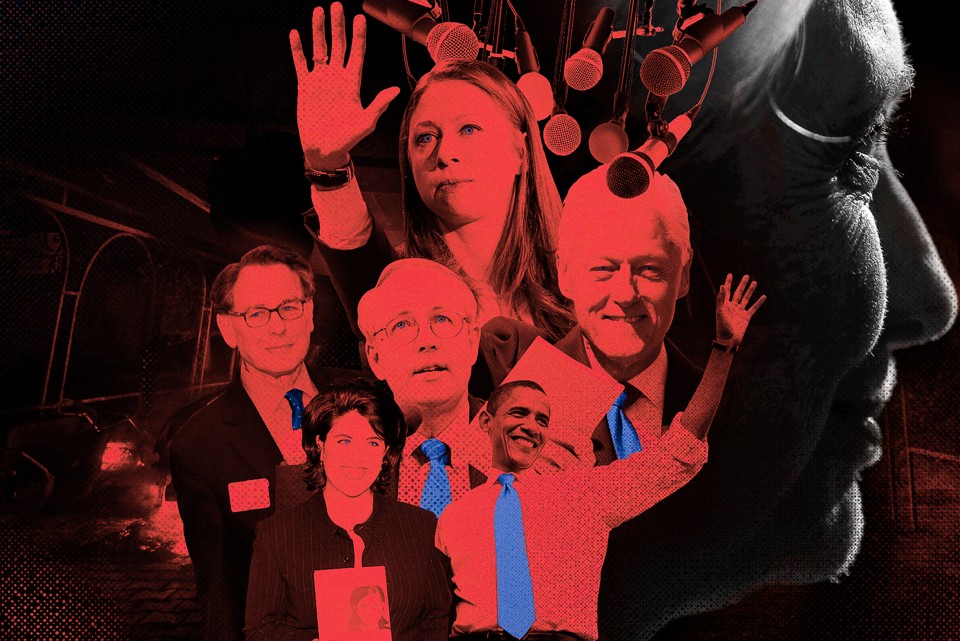
From Whitewater to Benghazi: A Clinton-Scandal Primer
The FBI found 30 emails related to the Benghazi attacks, some of which Hillary Clinton had not previously turned over, the State Department says.
Aug 30, 2016
Is there more to the Benghazi story than it appears?
It’s hard to believe that after multiple investigations spanning the nearly four years since the attack in Libya killed four Americans, there might be any new information to be found. But the State Department now says that the FBI has found 30 deleted emails from Hillary Clinton related to the incident.
Clinton turned over some 55,000 emails to the State Department after leaving office, having sorted them into work and personal emails; she says the personal emails were deleted. But emails keep popping up—some from lawsuits brought my accountability groups like the conservative Judicial Watch and others, like these 30, in the course of an FBI investigation into Clinton’s use of a private email server while secretary of state.
In late June, after months of investigation, a special House of Representatives Committee concluded that the Obama administration should have better fortified consular buildings, but did not find any specific wrongdoing by Clinton on the night of the attacks. A week later, the FBI announced that it would not recommend charges against Clinton for her use of the server, though Director James Comey called her and her staff “extremely careless.” The FBI is expected to release documents related to that investigation as soon as this week, and it has also handed over other information to Congress.
There’s not yet any information available about what’s in the 30 emails. The State Department said it would take until the end of September to review and potentially redact the messages. Perhaps everything in them is anodyne and replicated elsewhere. But even if that is true, the question of why Clinton did not hand them over with the original batch remains valid. Clinton says that lawyers sorted the tens of thousands of emails by using keywords, rather than reading them individually. The repeated additional disclosures continue to raise questions about whether Clinton was trying to hide something. Her defenders contend that nothing is amiss that and Clinton is held to an unfair standard. Of course, one easy way to avoid all of this would have been to simply use a State Department email account for State Department business.
The emails represent something of a classic Clinton scandal. Although the House investigation turned up no evidence of wrongdoing on her part with respect to the attacks themselves, it was during that inquiry that her private-email use became public. This is a pattern with the Clinton family, which has been in the public spotlight since Bill Clinton’s first run for office, in 1974: Something that appears potentially scandalous on its face turns out to be innocuous, but an investigation into it reveals different questionable behavior. The canonical case is Whitewater, a failed real-estate investment Bill and Hillary Clinton made in 1978. Although no inquiry ever produced evidence of wrongdoing, investigations ultimately led to President Clinton’s impeachment for perjury and obstruction of justice.
With Hillary Clinton leading the field for the Democratic nomination for president, every Clinton scandal—from Whitewater to the State Department emails—will be under the microscope. (No other American politicians—even ones as corrupt as Richard Nixon, or as hated by partisans as George W. Bush—have fostered the creation of a permanent multimillion-dollar cottage industry devoted to attacking them.) Keeping track of each controversy, where it came from, and how serious it is, is no small task, so here’s a primer. We’ll update it as new information emerges.
The Clintons’ Private Email Serve

Jim Young / Reuters / Zak Bickel / The Atlantic
What? During the course of the Benghazi investigation, New York Times reporter Michael Schmidt learned Clinton had used a personal email account while secretary of state. It turned out she had also been using a private server, located at a house in New York. The result was that Clinton and her staff decided which emails to turn over to the State Department as public records and which to withhold; they say they then destroyed the ones they had designated as personal.
When? 2009-2013, during Clinton’s term as secretary.
Who? Hillary Clinton; Bill Clinton; top aides including Huma Abedin
How serious is it? Very serious. A May report from the State Department inspector general is harshly critical of Clinton’s email approach, but Loretta Lynch announced on July 6 that the Justice Department would not pursue criminal charges, removing the threat of an indictment that could be fatal to her campaign. But the scandal will remain a millstone around her neck forever. Comey’s damning comments about her conduct—“Although we did not find clear evidence that Secretary Clinton or her colleagues intended to violate laws governing the handling of classified information, there is evidence that they were extremely careless in their handling of very sensitive, highly classified information”—will reverberate throughout the campaign. Also unresolved is the question of whether Clinton’s server was hacked. Comey said the FBI did not find any proof, but he also said that “we would be unlikely to see such direct evidence.” GOP members of Congress are questioning the FBI’s decision, and have tried to convince the Justice Department to charge Clinton with perjury for answers she gave them in October 2015.
Clinton’s State Department Emails

Secretary of State Hillary Clinton checks her phone on board a plane from Malta to Tripoli, Libya.
(Kevin Lamarque / Reuters / Zak Bickel / The Atlantic)
What? Setting aside the question of the Clintons’ private email server, what’s actually in the emails that Clinton did turn over to State? While some of the emails related to Benghazi have been released, there are plenty of others covered by public-records laws that are still in the process of being vetted for release.
When? 2009-2013
How serious is it? Serious, but not as serious as it was. While political operatives hoped for embarrassing statements in the emails—and there were some cringeworthy moments of sucking up and some eye-rolly emails from contacts like Sidney Blumenthal—they were, for the most part, boring. More damaging is the fact that 110 emails included classified information at the time they were sent or received, even though Clinton had insisted she did not send or receive anything classified. Meanwhile, some emails remain to be seen. The State Department, under court order, is slowly releasing the emails she turned over, but there are other emails that she didn’t turn over, which have surfaced through court battles. In August, the FBI reported that it had found some 15,000 documents during the course of its investigation that Clinton did not turn over to the State Department. State is now negotiating how and when to release those materials. State also says the FBI found 30 emails related to the Benghazi attacks that Clinton did not turn over.
Benghazi

A man celebrates as the U.S. Consulate in Benghazi burns on September 11, 2012. (Esam Al-Fetori / Reuters / Zak Bickel / The Atlantic)
What? On September 11, 2012, attackers overran a U.S. consulate in Benghazi, Libya, killing Ambassador Chris Stevens and three other Americans. Since then, Republicans have charged that Hillary Clinton failed to adequately protect U.S. installations or that she attempted to spin the attacks as spontaneous when she knew they were planned terrorist operations. She testifies for the first time on October 22.
When? September 11, 2012-present
How serious is it? With the June 28 release of the House committee investigating Benghazi, this issue is receding. That report criticized security preparations at the American facility in Benghazi as well as stations elsewhere, but it produced no smoking guns or new accusations about things Clinton could have done the night of the attacks. Although some conservatives will likely continue to assail her, the biggest damage is likely to be iterative—the highly damaging private-email story was revealed during the course of the House inquiry. In late August, the State Department announced that the FBI had found 30 new emails related to Benghazi that Clinton did not hand over. The content is as yet unknown, but the revelation will extend the story.
Conflicts of Interest in Foggy Bottom
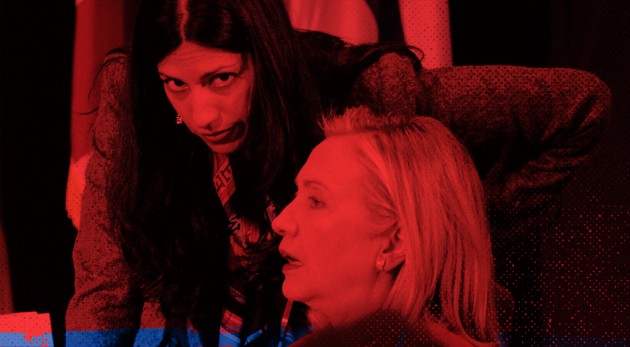
What? Before becoming Clinton’s chief of staff, Cheryl Mills worked for Clinton on an unpaid basis for four months while also working for New York University, in which capacity she negotiated on the school’s behalf with the government of Abu Dhabi, where it was building a campus. In June 2012, Deputy Chief of Staff Huma Abedin’s status at State changed to “special government employee,” allowing her to also work for Teneo, a consulting firm run by Bill Clinton’s former right-hand man. She also earned money from the Clinton Foundation and was paid directly by Hillary Clinton. In a separate case, ABC News reports that a top Clinton Foundation donor named Rajiv Fernando was placed on State’s International Security Advisory Board. Fernando appeared significantly less qualified than many of his colleagues, and was appointed at the behest of the secretary’s office. Internal emails show that State staff first sought to cover for Clinton, and then Fernando resigned two days after ABC’s inquiries. Judicial Watch released documents that show Doug Band, a Foundation official, trying to put a donor in touch with a State Department expert on Lebanon and to get someone a job at Foggy Bottom.
Who? Both Cheryl Mills and Huma Abedin are among Clinton’s longest-serving and closest aides. Abedin remains involved in her campaign (and she’s also married to Anthony Weiner).
When? January 2009-February 2013
How serious is it? This is arcane stuff, to be sure. There are questions about conflict of interest—such as whether Teneo clients might have benefited from special treatment by the State Department while Abedin worked for both. To a great extent, this is just an extension of the tangle of conflicts presented by the Clinton Foundation and the many overlapping roles of Bill and Hillary Clinton.
Sidney Blumenthal
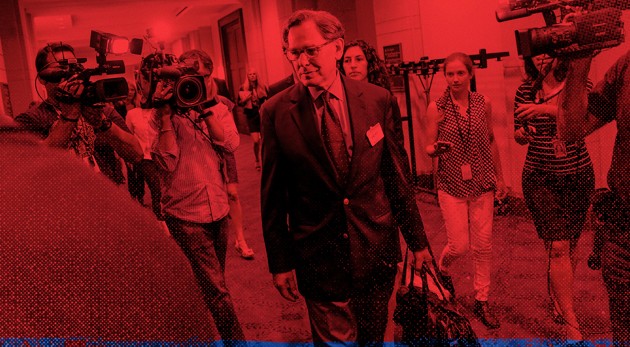
Blumenthal takes a lunch break while being deposed in private session of the House Select
Committee on Benghazi. (Jonathan Ernst / Reuters / Zak Bickel / The Atlantic)
What? A former journalist, Blumenthal was a top aide in the second term of the Bill Clinton administration and helped on messaging during the bad old days. He served as an adviser to Hillary Clinton’s 2008 presidential campaign, and when she took over the State Department, she sought to hire Blumenthal.
Obama aides, apparently still smarting over his role in attacks on candidate Obama, refused the request, so Clinton just sought out his counsel informally. At the same time, Blumenthal was drawing a check from the Clinton Foundation.
When? 2009-2013
How serious is it? Only mildly. Some of the damage is already done. Blumenthal was apparently the source of the idea that the Benghazi attacks were spontaneous, a notion that proved incorrect and provided a political bludgeon against Clinton and Obama. He also advised the secretary on a wide range of other issues, from Northern Ireland to China, and passed along analysis from his son Max, a staunch critic of the Israeli government (and conservative bęte noire). But emails released so far show even Clinton’s top foreign-policy guru, Jake Sullivan, rejecting Blumenthal’s analysis, raising questions about her judgment in trusting him.
The Speeches

What? Since Bill Clinton left the White House in 2001, both Clintons have made millions of dollars for giving speeches.
When? 2001-present
Who? Hillary Clinton; Bill Clinton; Chelsea Clinton
How serious is it? Intermittently dangerous. It has a tendency to flare up, then die down. Senator Bernie Sanders made it a useful attack against her in early 2016, suggesting that by speaking to banks like Goldman Sachs, she was compromised. There have been calls for Clinton to release the transcripts of her speeches, which she was declined to do, saying if every other candidate does, she will too. For the Clintons, who left the White House up to their ears in legal debt, lucrative speeches—mostly by the former president—proved to be an effective way of rebuilding wealth. They have also been an effective magnet for prying questions. Where did Bill, Hillary, and Chelsea Clinton speak? How did they decide how much to charge? What did they say? How did they decide which speeches would be given on behalf of the Clinton Foundation, with fees going to the charity, and which would be treated as personal income? Are there cases of conflicts of interest or quid pro quos—for example, speaking gigs for Bill Clinton on behalf of clients who had business before the State Department?
The Clinton Foundation
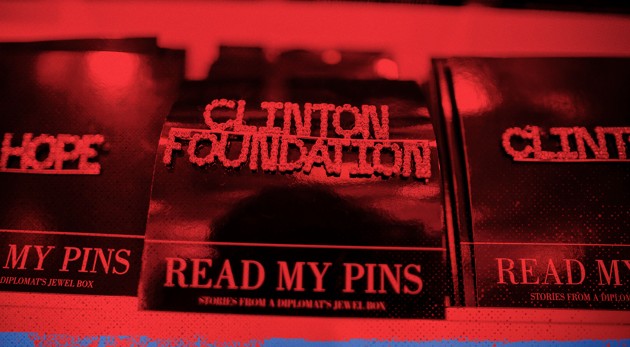
A brooch for sale at the Clinton Museum Store in Little Rock, Arkansas (Lucy Nicholson / Reuters / Zak Bickel / The Atlantic)
What? Bill Clinton’s foundation was actually established in 1997, but after leaving the White House it became his primary vehicle for … well, everything. With projects ranging from public health to elephant-poaching protection and small-business assistance to child development, the foundation is a huge global player with several prominent offshoots. In 2013, following Hillary Clinton’s departure as secretary of State, it was renamed the Bill, Hillary, and Chelsea Clinton Foundation.
When? 1997-present
Who? Bill Clinton; Hillary Clinton; Chelsea Clinton, etc.
How serious is it? If the Clinton Foundation’s strength is President Clinton’s endless intellectual omnivorousness, its weakness is the distractibility and lack of interest in detail that sometimes come with it. On a philanthropic level, the foundation gets decent ratings from outside review groups, though critics charge that it’s too diffuse to do much good, that the money has not always achieved what it was intended to, and that in some cases the money doesn’t seem to have achieved its intended purpose. The foundation made errors in its tax returns it has to correct. Overall, however, the essential questions about the Clinton Foundation come down to two, related issues. The first is the seemingly unavoidable conflicts of interest: How did the Clintons’ charitable work intersect with their for-profit speeches? How did their speeches intersect with Hillary Clinton’s work at the State Department? Were there quid-pro-quos involving U.S. policy? Did the foundation steer money improperly to for-profit companies owned by friends? The second, connected question is about disclosure. When Clinton became secretary, she agreed that the foundation would make certain disclosures, which it’s now clear it didn’t always do. And the looming questions about Clinton’s State Department emails make it harder to answer those questions.
The Bad Old Days
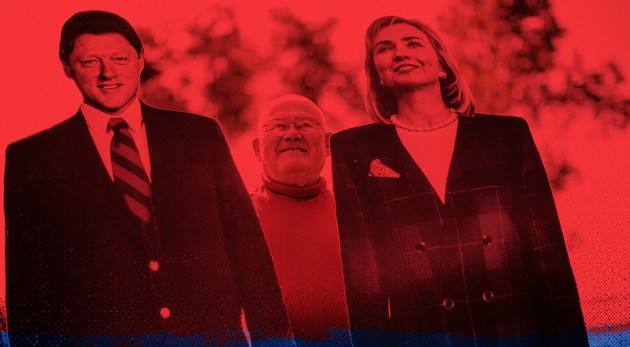
Supporter Dick Furinash holds up cardboard cut-outs of Bill and Hillary Clinton. (Jim Young / Reuters / Zak Bickel / The Atlantic)
What is it? Since the Clintons have a long history of controversies, there are any number of past scandals that continue to float around, especially in conservative media: Whitewater. Troopergate. Paula Jones. Monica Lewinsky. Travelgate. Vince Foster’s suicide. Juanita Broaddrick.
When? 1975-2001
Who? Bill Clinton; Hillary Clinton; a brigade of supporting characters
How serious is it? The conventional wisdom is that they’re not terribly dangerous. Some are wholly spurious (Foster). Others (Lewinsky, Whitewater) have been so exhaustively investigated it’s hard to imagine them doing much further damage to Hillary Clinton’s standing. In fact, the Lewinsky scandal famously boosted her public approval ratings. But the January 2016 resurfacing of Juanita Broaddrick’s rape allegations offers a test case to see whether the conventional wisdom is truly wise—or just conventional. On May 23, Donald Trump released a video prominently highlighting Broaddrick’s accusation.
http://www.theatlantic.com/politics/...nghazi/396182/
Similar Threads
-
Why Whitewater Matters: Newly Released Documents Show A Pattern Of Clinton Deception
By Newmexican in forum General DiscussionReplies: 1Last Post: 02-22-2016, 05:21 PM -
Hillary Clinton Implicated In Benghazi Murders - The Butcher of Benghazi
By AirborneSapper7 in forum General DiscussionReplies: 5Last Post: 03-11-2014, 01:43 AM -
BENGHAZI – BIGGEST COVER-UP SCANDAL IN U.S. HISTORY? – BENGHAZI CIA GUN-RUNNING
By AirborneSapper7 in forum General DiscussionReplies: 126Last Post: 11-18-2013, 07:20 AM -
Benghazi Scandal - Benghazi Survivor Hero Speaks Out - Judge Jeanine Pirro
By AirborneSapper7 in forum General DiscussionReplies: 1Last Post: 07-29-2013, 11:19 AM -
Benghazi Scandal Takes Another Turn Against Obama and Clinton
By AirborneSapper7 in forum General DiscussionReplies: 0Last Post: 06-24-2013, 06:23 AM


 LinkBack URL
LinkBack URL About LinkBacks
About LinkBacks




 Reply With Quote
Reply With Quote


In the Race to the White House, Illegals Will Be Casting Votes...
04-18-2024, 03:00 PM in illegal immigration News Stories & Reports